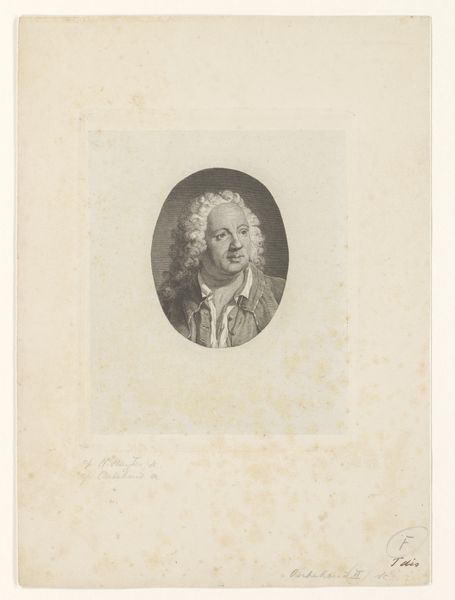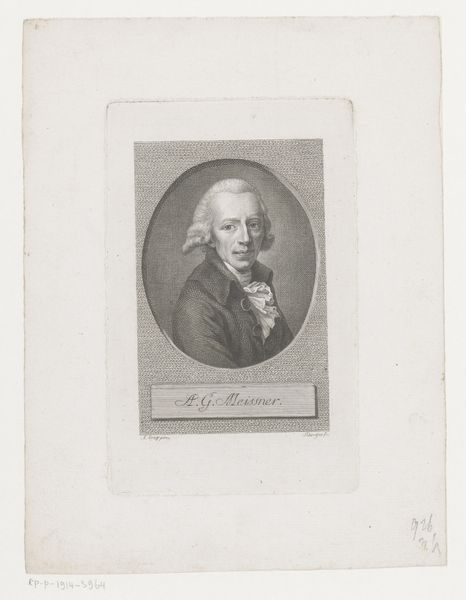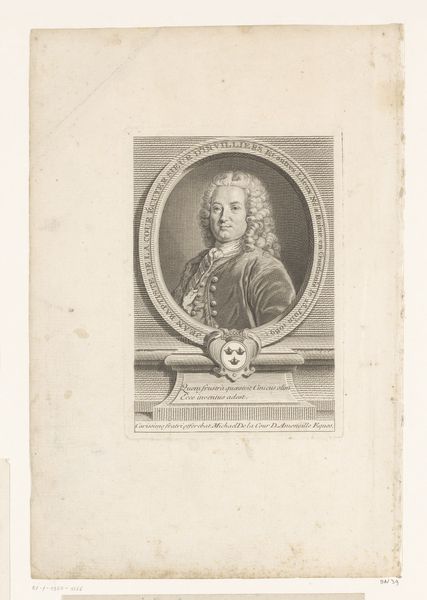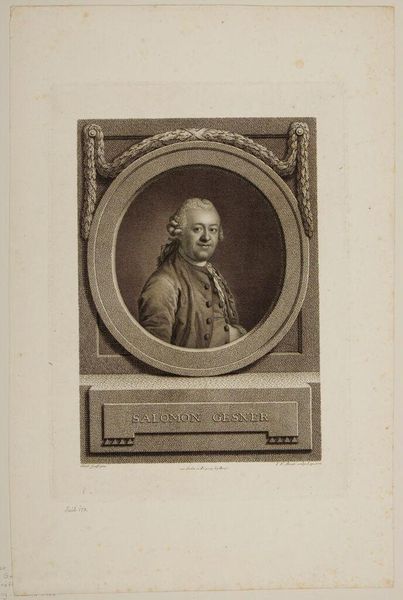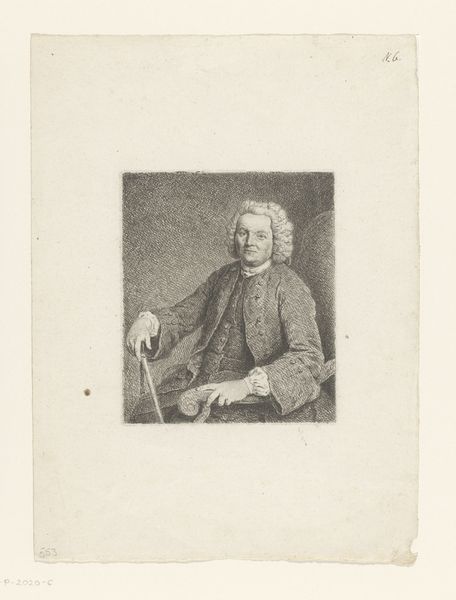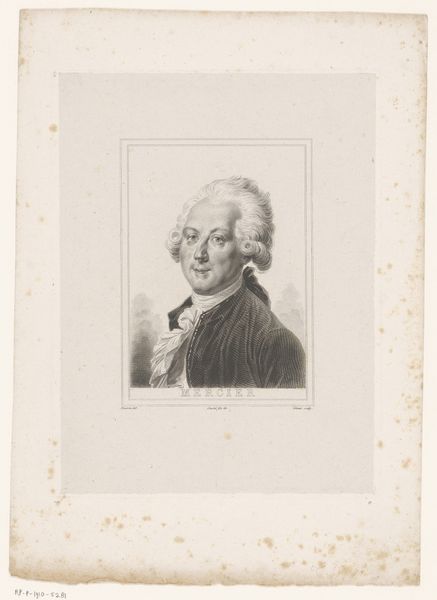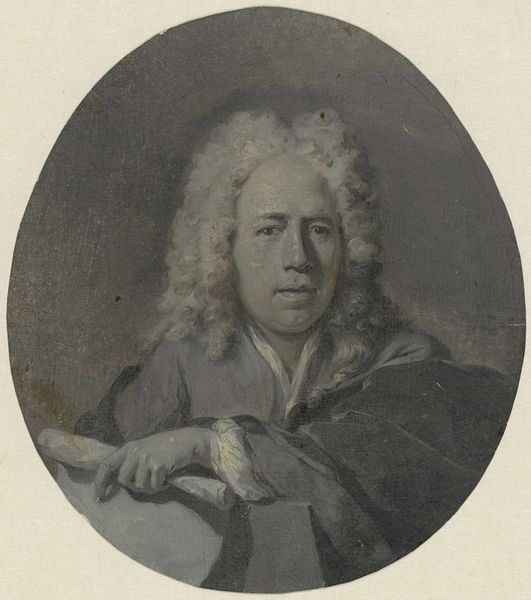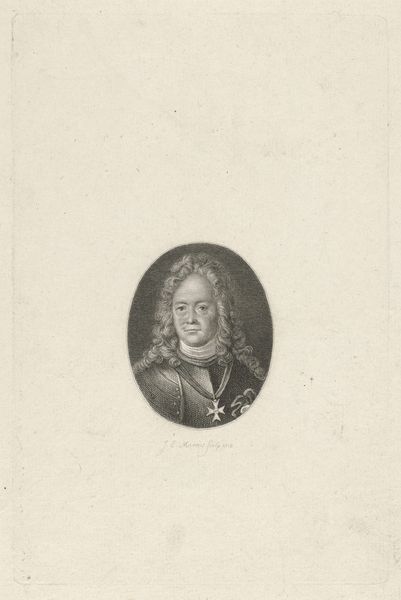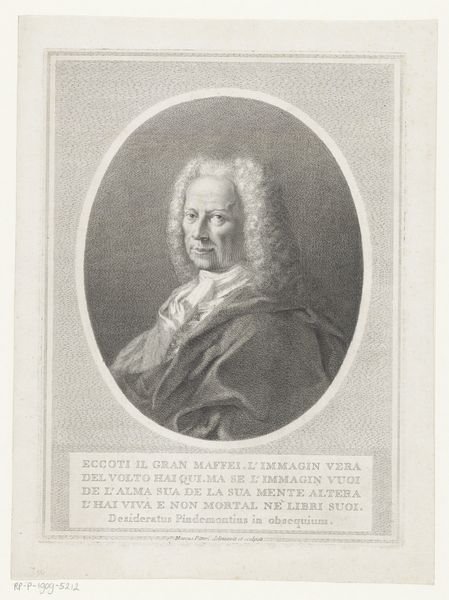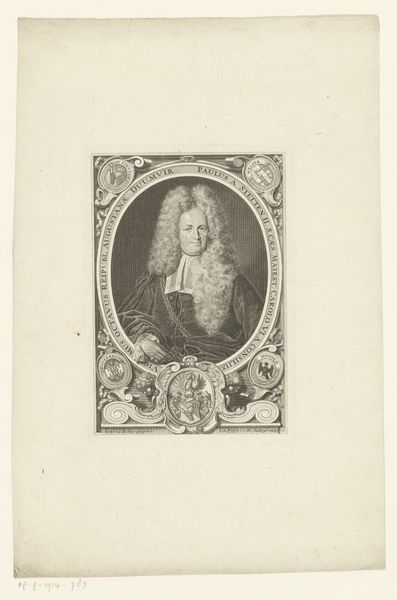
print, engraving
#
portrait
#
neoclacissism
# print
#
old engraving style
#
pencil drawing
#
engraving
#
realism
Dimensions: height 150 mm, width 113 mm
Copyright: Rijks Museum: Open Domain
Curator: Here we have an engraving, “Portret van Jean Baptiste Rousseau (1671-1741)," crafted in 1858 by Hendrik D. Jzn Sluyter. It is now held in the Rijksmuseum. Editor: My immediate impression is one of studied detachment. There's a clear attempt to present this figure with a degree of formality, even within the constraints of the engraving medium. Curator: Yes, the engraving technique lends itself to a meticulous depiction. Observe how the artist uses fine lines to render the textures, particularly in the subject’s wig. Notice too, how the artist contains the subject within an oval that immediately gives it shape. It reflects a formal tradition and offers a commentary on line and shape. Editor: And what of Jean Baptiste Rousseau himself, a celebrated though controversial poet? The very act of memorializing him through portraiture elevates him within the societal structure. Curator: True. The portrait can be appreciated for how it operates formally and pictorially. The composition—the angle of the head, the fall of light—all contribute to the formal visuality. Editor: However, considering Rousseau’s sharp critiques of the French court, is it also an act of claiming his legacy in the face of those he challenged? This isn't just a neutral depiction; it's an act of historical recuperation through aesthetics, particularly within the neo-Classical leanings in realism visible in this piece. Curator: The formal realism is tempered, however, by an interesting softness around the face, an ephemeral quality that adds another dimension to the work. Editor: Perhaps. I'm drawn to consider it alongside period discussions concerning patronage, representation, and power, particularly who gets remembered and how they are framed to influence posterity. Curator: The power of such portraiture indeed hinges on its ability to transmit its forms across time, influencing how its viewers are placed both within and across distinct cultural moments. Editor: So ultimately, this piece becomes a palimpsest of sorts: at once an artistic accomplishment, a record of artistic process, and a claim for the way art shapes understanding.
Comments
No comments
Be the first to comment and join the conversation on the ultimate creative platform.



